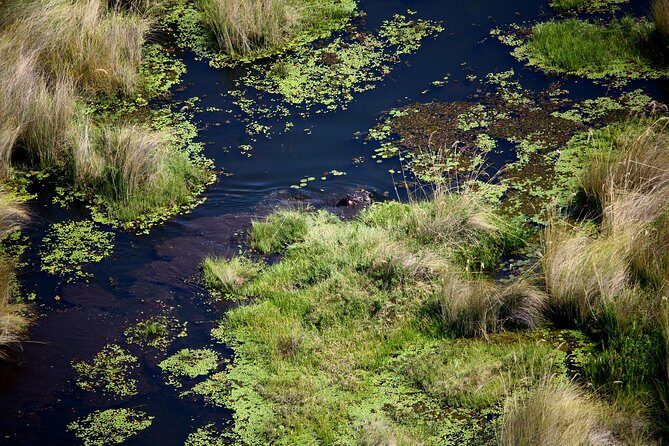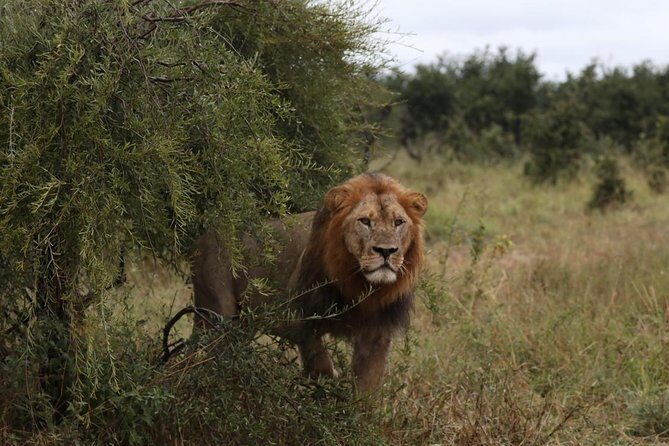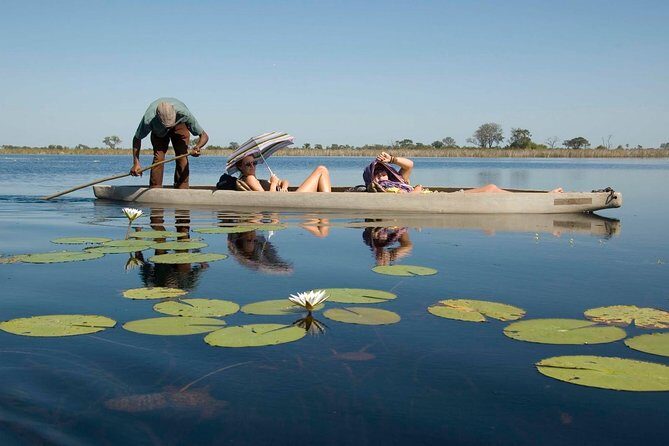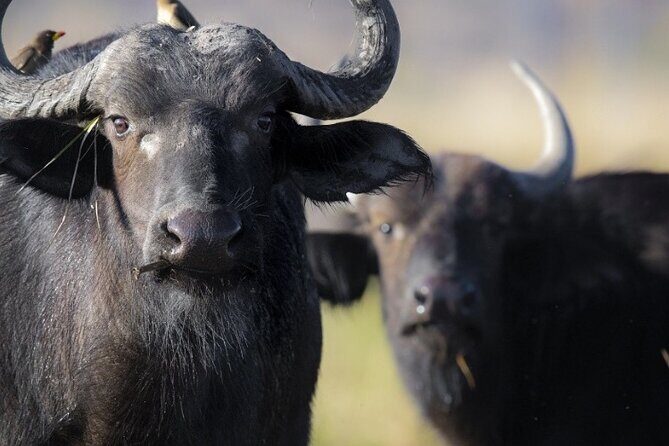Introduction to the Okavango Delta
The Okavango Delta, one of the world’s largest inland deltas, is a unique geographic marvel located in Botswana. Formed by the seasonal flooding of the Okavango River, it spreads over an area of approximately 15,000 square kilometers and creates a diverse ecosystem that supports a wide array of wildlife. This region holds significant importance, having been designated as a UNESCO World Heritage site, recognized for its ecological superiority and biodiversity. The annual flooding transforms the delta into a lush paradise, attracting both wildlife and visitors alike.

The richness of biodiversity in the Okavango Delta is unparalleled. It is home to numerous species of fish, birds, mammals, and plants, with many species remaining endemic to the area. Iconic animals such as elephants, hippos, and crocodiles thrive in this unique habitat, while the delta serves as a breeding ground for various migratory birds. This remarkable biodiversity plays a pivotal role in Botswana’s community tourism initiatives, making the delta a crucial element in the country’s sustainable tourism model.
BOOK ACTIVITIES HERE

As a focal point for travelers seeking an authentic experience, the Okavango Delta is central to Botswana’s tourism industry. Visitors flock to the area, yearning to immerse themselves in the stunning natural beauty it offers. A mokoro safari in the Okavango Delta is one of the most popular ways to explore this spectacular landscape, providing a serene and intimate perspective of its inhabitants. Such experiences not only showcase the delta’s ecological wealth but also highlight the importance of conservation efforts that support and protect its environment. As more travelers seek unique experiences in Botswana’s national parks and natural reserves, the Okavango Delta continues to shine as a premier destination worthy of exploration and admiration.
What is a Mokoro and How Does it Work?
A mokoro is a traditional dugout canoe that plays an essential role in the daily lives of the people living in the Okavango Delta, particularly among the various Botswana community tourism initiatives. Constructed from lightweight trees such as the sausage tree or other suitable species, a mokoro is shaped into an elongated canoe which allows for efficient navigation through the delta’s intricate waterways. The craft’s design ensures that it glides smoothly over the water, minimizing disturbance to the aquatic ecosystem while offering a unique means of transportation.

The historical significance of the mokoro derives from its deep-rooted connection to the culture of the indigenous communities of Botswana. Historically, these canoes were crafted out of necessity for fishing, trade, and transport across the Okavango Delta’s winding channels. Today, mokoros are not only a practical means of travel but also serve as a commercial attraction for tourists seeking authentic Botswana travel experiences. Engaging in a mokoro safari in the Okavango Delta allows visitors to immerse themselves in the local heritage while witnessing spectacular wildlife in a serene environment.
BOOK HERE FOR ACTIVITIES
Paddling a mokoro requires a unique skillset, distinct from other safari methods such as open-vehicle game drives. A skilled poler, armed with a traditional wooden paddle, steers the mokoro through the waterways by pushing against the riverbed. This ancient method of propulsion enables the mokoro to navigate through shallow waters, offering the opportunity to observe animals along the riverbanks without startling them. The tranquility of a mokoro safari provides an unparalleled vantage point for calmly appreciating the flora and fauna that thrive within Botswana’s national parks.
Quick Recommendation: Our blog is filled with tips, destinations, and travel deals. If you are looking for a budget-friendly travel and hotel deals, I recommend Expedia Travel Group.
The Unique Experience of a Mokoro Safari
A mokoro safari in the Okavango Delta offers an unparalleled adventure that immerses travelers in the stunning natural beauty of Botswana. Unlike traditional safari vehicles that traverse the terrain at greater speeds, a mokoro—a traditional canoe carved from a single tree—provides a serene and intimate method of exploring this UNESCO World Heritage site. As you glide silently through the crystal-clear waters, the experience allows for an immersive connection with the rich flora and fauna that call the Delta home.
One of the most striking aspects of a mokoro safari is the tranquility that envelops you as you navigate the waterways. The gentle paddling motion draws you into a world where the sounds of nature reign supreme. The rustling of reeds, the distant calls of birds, and the occasional splash of a fish create a soothing backdrop that enhances the experience. This peaceful environment offers an ideal setting for observing wildlife in its natural habitat—often at closer quarters than one might achieve in a vehicle. Eye-catching bird species, such as the Great Egret and African Fish Eagle, are frequently sighted, while you may also catch glimpses of hippos and crocodiles in their aquatic domain.
Moreover, the mokoro journey allows for a deeper appreciation of the Delta’s ecosystem. The expert polers, community locals who are familiar with the waterways, share their knowledge of the landscape and its inhabitants, enriching your understanding of the region. Participants have the unique opportunity to engage with the environment, learning about the diverse vegetation, such as papyrus and water lilies, and their critical roles within the ecosystem. Thus, a mokoro safari transcends mere observation; it fosters a profound connection with Botswana’s rich natural heritage.
Wildlife Spotting in the Okavango Delta
The Okavango Delta, a UNESCO World Heritage Site, is renowned for its unparalleled biodiversity, making it an exceptional destination for wildlife spotting during a mokoro safari. This unique ecosystem supports a wide range of species, providing an up-close experience unlike any other. As you glide silently through the water channels, you may encounter large herds of elephants, often seen foraging along the banks, as well as hippos, which are typically found basking in the shallows. The best times for wildlife viewing are early mornings and late afternoons, when the animals are more active.

Moreover, the delta offers an outstanding opportunity to observe various bird species. With over 500 species recorded, twitchers and nature lovers will find themselves captivated by vibrant kingfishers, storks, and the majestic African Fish Eagle. The wetland environment also attracts birds such as herons and ibises, particularly during the breeding season, when they gather to nest. The cacophony of bird calls adds to the rich auditory landscape, heightening the immersive experience of Botswana community tourism.
Additionally, the Okavango Delta is home to diverse aquatic life, including crocodiles and various fish species. The mokoro, a traditional canoe, allows travelers to navigate through narrow channels and hidden lagoons, providing unique vantage points to observe this spectacular fauna. Travelers can also expect to see smaller terrestrial animals such as reedbuck and waterbuck near the shore. Wildlife spotting in the Okavango Delta is a remarkable adventure that enhances the overall experience of Botswana travel tips, making your visit truly unforgettable.
Quick Recommendation: Our blog is filled with tips, destinations, and travel deals. If you are looking for a budget-friendly travel and hotel deals, I recommend Expedia Travel Group.
The Cultural Significance of the Mokoro
The mokoro, a traditional dugout canoe, is an integral part of the cultural heritage of Botswana, particularly among the communities residing near the Okavango Delta. This iconic vessel, originally crafted from a single tree trunk, serves not only as a means of transportation but also as a symbol of the deep connection that the local populace has with their environment. The art of poling a mokoro, where skilled guides maneuver the canoe through the intricate waterways of the delta, showcases a tradition passed down through generations. These polers, often members of the local community, possess an intimate understanding of the eco-system, which greatly enhances the mokoro safari experience.
Participating in a mokoro safari in the Okavango Delta allows visitors to observe the rich biodiversity of Botswana’s national parks while also gaining insights into the traditional lifestyles of the local tribes, such as the Bayei and the Hambukushu. The mobility provided by the mokoro allows for close encounters with the vibrant wildlife, from elephants bathing to hippos lurking nearby. However, it is the cultural narratives shared by the polers that truly enriches this adventure. As they share stories of their ancestors’ lives and the spiritual significance of the waterways, tourists are offered a perspective that transcends mere wildlife spotting, fostering a deeper appreciation for the landscapes of Botswana.
Moreover, the mokoro serves as a powerful reminder of the urgent need for sustainable tourism practices. Engaging in community-based tourism helps to promote the economic stability of these areas, allowing local families to benefit directly from visitors seeking authentic experiences. By choosing to embark on a mokoro safari, travelers not only enjoy the scenic beauty of Botswana’s waterways but also contribute to the preservation of its cultural heritage and natural resources.
Best Time to Experience a Mokoro Safari
Embarking on a mokoro safari in the Okavango Delta is a remarkable way to experience Botswana’s stunning natural beauty and diverse wildlife. To ensure a memorable adventure, it is crucial to consider the best time to visit. The Okavango Delta experiences seasonal changes that significantly impact climate, wildlife activity, and overall safari experiences.
The optimal time for a mokoro safari generally spans from May to September, coinciding with Botswana’s dry season. During this period, temperatures are mild, and the likelihood of rainfall diminishes, making the waterways more accessible for mokoro trips. As the water levels rise due to seasonal flooding from the Angolan highlands, wildlife tends to congregate around permanent water sources, providing ample opportunities for sightings. The cooler temperatures during the day also enhance the comfort of exploring the picturesque landscapes.
Moreover, this dry period aligns with the peak tourist season, ensuring that many lodges and operators are fully operational and equipped to cater to visitors. This is an excellent time to benefit from Botswana travel tips from experienced guides, who can help connect you with the best experiences available. However, while May to September is ideal, shoulder seasons, such as late April or early October, also present their own allure. These transitional months can offer exceptional wildlife viewing opportunities as animals become increasingly mobile and active, exploring their habitats.
It is essential to recognize the impact that weather conditions can have on your mokoro safari experience. In the rainy season, typically from November to April, the delta transforms into a lush and vibrant paradise, but navigating waterways can be more complex due to increased water levels and occasional flooding. Therefore, those intending to partake in a mokoro expedition should evaluate these seasonal changes to enhance their Botswana community tourism experience and maximize the potential for wildlife encounters.
Planning Your Mokoro Safari: Tips and Considerations
When planning a mokoro safari in the Okavango Delta, it is essential to choose a reputable safari operator. Opt for companies that are well-reviewed and recognized for their commitment to sustainable tourism. This not only ensures that you receive a quality experience but also helps in supporting the local economy and promoting community tourism in Botswana. Look for operators who emphasize eco-friendly practices and provide insights into the unique ecosystem of the Delta.
Packing essentials plays a crucial role in enhancing your mokoro experience. Lightweight, breathable clothing is recommended, as temperatures can vary widely throughout the day. Consider wearing neutral colors to blend in with the surrounding environment, which helps with wildlife observation. Don’t forget a wide-brimmed hat, sunglasses, and sunscreen to protect yourself from the sun’s rays. Additionally, a reliable insect repellent is vital, given the presence of mosquitoes in the area. A small backpack to carry your necessities during the safari is also advisable, keeping in mind that baggage should be minimal due to space constraints in the mokoro.
Health and safety considerations are paramount before embarking on your Botswana adventure. It is advisable to check with a healthcare professional regarding vaccinations and malaria prevention measures, as both are important for your health. Familiarize yourself with basic safety protocols, particularly when engaging with wildlife during your safari, as respectful distance is crucial. Furthermore, staying hydrated is vital, especially in the warm climate of the Okavango Delta. Ensure that you pack a refillable water bottle to limit plastic waste while enjoying your journey through Botswana’s enchanting landscapes.
Combining Mokoro Safaris with Other African Water Safaris
Exploring the captivating landscapes of Botswana through a mokoro safari in the Okavango Delta offers an unforgettable experience, and travelers can greatly enhance their adventure by integrating additional African water safaris into their itinerary. Southern Africa is home to numerous river systems and wetlands that provide opportunities to discover a diverse range of ecosystems, wildlife, and cultural experiences.
One popular complement to a mokoro safari is a cruise along the Zambezi River. This dynamic waterway showcases stunning landscapes and unique flora and fauna, making it an ideal setting for wildlife viewing. Visitors may enjoy seeing elephants, hippos, and an array of bird species as they glide along the serene waters. In addition to the natural beauty, the Zambezi River is known for its proximity to Victoria Falls, one of the world’s most spectacular waterfalls, providing the perfect addition to any Botswana travel itinerary.
Another appealing option is to embark on a canoe safari in the Selinda Canoe Trail, located just north of the Okavango Delta. This journey allows adventurers to paddle through serene waterways while witnessing the extraordinary wildlife found in the region. As with the mokoro, the canoe puts travelers at eye level with the surrounding nature, enhancing their appreciation of Botswana’s rich biodiversity.
For those looking for a more coastal experience, a visit to the nearby Caprivi Strip in Namibia offers lush river vistas and exciting options for fishing and boating. The diverse ecosystems along the Zambezi River provide an excellent opportunity to engage in traditional fishing practices while enjoying the camaraderie of local communities. Combining these experiences not only enriches your understanding of Southern Africa but also highlights the harmonious relationship between its inhabitants and the environment.
All these activities enhance the allure of a mokoro safari, creating a holistic experience that showcases the vibrant landscapes and rich cultures of Botswana and its neighbors. BOOK HERE FOR ACTIVITIES
Conclusion: Why the Botswana Mokoro Experience is Unforgettable
Experiencing a mokoro safari in the Okavango Delta is not merely an adventure; it is an opportunity for deep connection with nature, wildlife, and local culture, immersing travelers in the unique beauty of Botswana’s landscapes. For those seeking to understand the essence of Botswana community tourism, a mokoro trip stands out as an ideal way to engage with the environment and the people who inhabit it. Gliding silently through the serene waters in a traditional dugout canoe allows travelers to witness the delicate balance of the ecosystem while learning about the significance of sustainable practices that protect this UNESCO World Heritage site.

One cannot overlook the enchanting encounters with a variety of wildlife, ranging from elephants to diverse bird species, which are a hallmark of Botswana national parks. The mokoro safari transforms the safari experience, providing an unparalleled vantage point to observe these majestic creatures in their natural habitat. This intimate experience fosters a greater appreciation for wildlife conservation efforts and emphasizes the importance of preserving the delicate ecosystems of the Okavango Delta.
Moreover, engaging with the local communities during such journeys highlights the cultural richness that Botswana offers. Travelers have the chance to learn about the traditions, customs, and stories shared by the indigenous people, enhancing their overall understanding of the land they are exploring. Travel tips for Botswana emphasize the significance of cultural interactions and highlight how these connections can enrich the travel experience beyond seeing wildlife alone.
In conclusion, the mokoro safari presents an essential opportunity for travelers to not only observe but also participate in the ongoing narrative of Botswana’s natural wonders and cultural heritage. It is a journey that redefines adventure, making it a must-do for anyone visiting this remarkable country.
BOOK HERE FOR ACTIVITIES
Quick Recommendation: Our blog is filled with tips, destinations, and travel deals. If you are looking for a budget-friendly travel and hotel deals, I recommend Expedia Travel Group.
